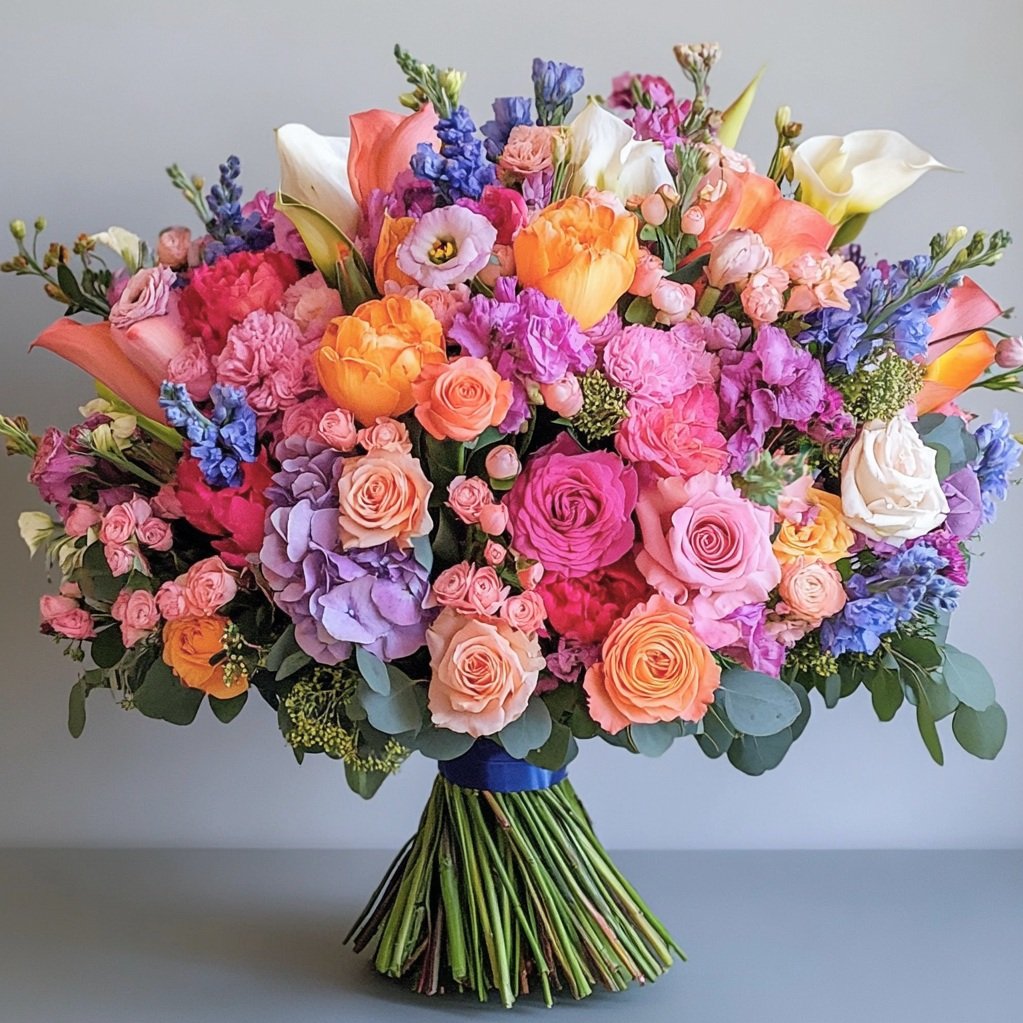A Botanical Guide to Different Flower Bloom Structures for Florists
Understanding flower bloom structures is essential for florists who want to create aesthetically pleasing and well-balanced arrangements. The structure of a bloom affects its visual impact, how it pairs with other flowers, and its role in a bouquet or arrangement. Here’s a flower delivery guide to the most common flower bloom structures, their characteristics, and how to use them effectively.
1. Solitary Blooms
Definition: Flowers that grow individually on a single stem rather than in clusters.
Examples:
Roses (Rosa spp.)
Tulips (Tulipa spp.)
Magnolias (Magnolia spp.)
Characteristics:
These blooms are often large and striking.
Their singular nature makes them focal points in arrangements.
Floral Design Tips:
Use solitary blooms as the centerpiece of bouquets or arrangements.
Pair with filler flowers and foliage to enhance their prominence.
Best for minimalist designs where the bloom can shine on its own.
2. Clustered Blooms (Inflorescences)
Definition: A group of flowers arranged on a single stem or branch.
Types of Inflorescences:
Raceme: Flowers are attached to the stem with short stalks in an elongated form.
Examples: Delphinium, Lupine
Spike: Similar to a raceme but flowers are attached directly to the stem without stalks.
Examples: Gladiolus, Snapdragon
Umbel: A flat or rounded arrangement of flowers with stalks radiating from a single point.
Examples: Queen Anne’s Lace, Allium
Corymb: A flat-topped cluster where the outer flowers bloom first.
Examples: Yarrow, Hawthorn
Panicle: A branched cluster of flowers, often pyramid-shaped.
Examples: Hydrangea, Astilbe
Floral Design Tips:
Use racemes and spikes to add height and drama to arrangements.
Umbels and corymbs are ideal for creating a soft, airy look.
Panicles provide volume and texture, working well as filler elements or accents.
3. Composite Blooms
Definition: Flowers composed of multiple small florets arranged to resemble a single bloom.
Examples:
Sunflowers (Helianthus spp.)
Daisies (Bellis perennis)
Zinnias (Zinnia spp.)
Characteristics:
The central disk is surrounded by petal-like ray florets.
Composite blooms are symmetrical and visually impactful.
Floral Design Tips:
Use as focal flowers in rustic, cheerful arrangements.
Pair with greenery and smaller blooms to create contrast.
Group several composite blooms together for a bold look.
4. Rosette Blooms
Definition: Flowers with petals arranged in a circular pattern resembling a rose.
Examples:
Ranunculus (Ranunculus spp.)
Peonies (Paeonia spp.)
Camellias (Camellia spp.)
Characteristics:
Rosette blooms are dense, layered, and luxurious.
They are often large and come in a variety of colors.
Floral Design Tips:
Perfect for romantic and opulent arrangements.
Combine with trailing foliage for a dramatic effect.
Use sparingly as focal flowers due to their strong presence.
5. Bell-Shaped Blooms
Definition: Flowers shaped like bells, often drooping or nodding.
Examples:
Lily of the Valley (Convallaria majalis)
Campanula (Campanula spp.)
Fritillaria (Fritillaria spp.)
Characteristics:
Delicate and often fragrant.
Can add vertical interest to arrangements.
Floral Design Tips:
Use to create a soft, whimsical effect.
Pair with open blooms for contrast in texture and shape.
Ideal for cascading or trailing bouquets.
6. Tubular Blooms
Definition: Flowers with a narrow, elongated shape, often attracting pollinators like hummingbirds.
Examples:
Honeysuckle (Lonicera spp.)
Foxglove (Digitalis spp.)
Trumpet Vine (Campsis spp.)
Characteristics:
Tubular blooms add linear movement and intrigue to designs.
Floral Design Tips:
Use in tall arrangements for vertical drama.
Pair with larger blooms to balance their narrow profile.
Ideal for exotic or tropical arrangements.
7. Star-Shaped Blooms
Definition: Flowers with petals arranged in a star-like pattern.
Examples:
Orchids (Orchidaceae)
Jasmine (Jasminum spp.)
Starflowers (Trientalis borealis)
Characteristics:
Sleek and modern, often associated with exotic or minimalist styles.
Floral Design Tips:
Star-shaped blooms pair beautifully with geometric arrangements.
Use sparingly for accents or minimalist designs.
Highlight their shape by placing them against softer, rounded flowers.
8. Fluffy or Pom-Pom Blooms
Definition: Flowers with a spherical or fluffy appearance, made up of tightly packed petals or florets.
Examples:
Chrysanthemums (Chrysanthemum spp.)
Dahlias (Dahlia spp.)
Carnations (Dianthus caryophyllus)
Characteristics:
Add texture and fullness to arrangements.
Available in a wide range of colors.
Floral Design Tips:
Use to fill gaps and add volume.
Pair with linear and open flowers for contrast.
Perfect for festive and cheerful designs.
9. Flat or Plate-Like Blooms
Definition: Flowers with a flat, wide bloom structure.
Examples:
Gerbera Daisies (Gerbera spp.)
Scabiosa (Scabiosa spp.)
Cosmos (Cosmos spp.)
Characteristics:
Bold and attention-grabbing.
Offer a sense of simplicity and symmetry.
Floral Design Tips:
Use as a focal or transitional flower.
Combine with airy foliage for a balanced look.
Ideal for casual or garden-inspired arrangements.
10. Filler Flowers
Definition: Small flowers used to add texture and fill spaces in arrangements.
Examples:
Baby’s Breath (Gypsophila spp.)
Waxflower (Chamelaucium spp.)
Aster (Aster spp.)
Characteristics:
Small, delicate, and versatile.
Available in various colors and textures.
Floral Design Tips:
Use to create depth and dimension.
Pair with larger blooms to soften their edges.
Perfect for creating a cohesive and polished look.
Final Tips for Florists
Know Your Roles: Understand whether the flower serves as a focal point, filler, or accent in your design.
Combine Shapes: Mixing different bloom structures adds visual interest and texture to arrangements.
Play with Proportions: Use larger, solitary blooms sparingly and balance them with smaller, clustered flowers and fillers.
Highlight Unique Features: Showcase the natural beauty of unusual bloom shapes like tubular or star-shaped flowers.
Seasonal Awareness: Choose bloom structures that align with seasonal themes for a harmonious design.
By mastering the diversity of flower bloom structures, florists can create stunning, balanced, and dynamic floral designs tailored to any occasion or style.
